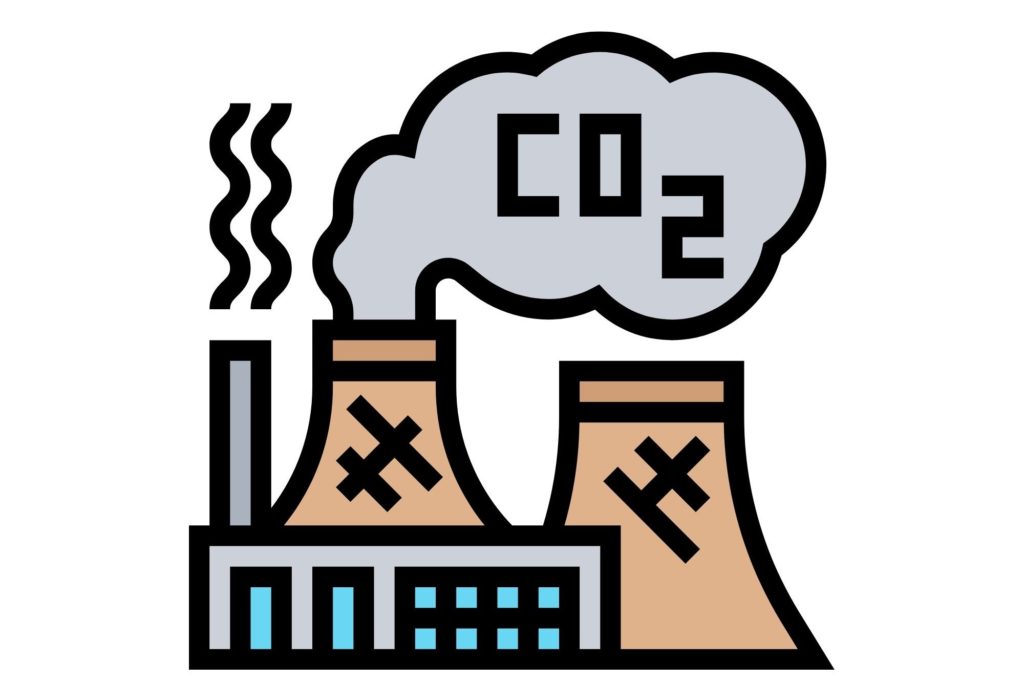A carbon footprint, also known as a CO2 footprint, is the total quantity of greenhouse gases (including carbon dioxide and methane) emissions created as a result of an individual’s actions over a specific time period, usually a year. In addition, a carbon footprint is a critical tool for determining how a person’s actions affect global warming. This is why, at the very least on an individual scale, everybody who wishes to successfully contribute to reducing global warming must quantify and manage their personal carbon footprint.

Table of Contents
The Science of Carbon Footprint Assessment
A carbon footprint is the total quantity of greenhouse gases (GHG) produced to sustain a person’s lifestyle and activities, both directly and indirectly. This is a critical tool for determining the influence of a person’s actions on global warming.
Furthermore, carbon footprints are often quantified in equivalent tonnes of CO2 over the course of a year and can be linked to a person, an organization, a product, or an event, among other things.
The production and use of fossil fuels, food, manufactured items, materials, roads, and transportation may all contribute to a carbon footprint.
Despite their significance, carbon footprints are difficult to determine precisely due to a lack of understanding and data about the intricate interconnections among contributing systems, including the impact of natural processes that store or release carbon dioxide.
How to reduce carbon footprint?
There are many ways that a carbon footprint can be reduced that require fairly simple changes that can be implemented over time.
- Home energy: The use of energy-efficient appliances, particularly heaters, air conditioners, and freezers, can help to minimize emissions that contribute to a carbon footprint.
Upgrading incandescent light bulbs to fluorescents or LEDs, as well as adjusting thermostats to a suitable level, will help cut emissions (using a programmable model also helps).
- Sustainable transport: Driving-related carbon emissions may be totally avoided by walking or riding a bike. Taking public transit reduces carbon dioxide emissions significantly.
Furthermore, low-carbon automobiles are an alternative that enables driving while reducing overall carbon emissions. Electric automobiles generate no carbon dioxide if the power they use has no carbon emissions linked with it.
- Recycling and composting: Recycling and composting assist to minimise carbon emissions from the “supply of commodities,” which includes resource extraction, transportation, manufacture, and disposal.
- Food miles: Producing and shipping food produces a considerable amount of greenhouse gas emissions, therefore consuming food grown close to home can help reduce emissions.
- Beef and dairy intake: The production of beef and dairy on large farms produces a large number of greenhouse gases especially if it is not locally produced.
Greenhouse Gases
Greenhouse gases absorb heat when they interact with sunlight. They are responsible for the earth’s climate.
Our carbon footprint is the sum of all greenhouse gases released as a result of our actions and the energy expended in the production of the goods we purchase.
The place we live, the car we drive, the clothes we wear, the food we eat even that cup of morning coffee, all consume energy and they all add up to global warming.
The main gases responsible for the greenhouse effect include carbon dioxide, methane, nitrous oxide, water vapor (which all occur naturally), and fluorinated gases (which are synthetic).
Effects of carbon footprint
- Excess carbon in the ocean causes the water to become more acidic, endangering marine life.
- Excess greenhouse gases (Carbon dioxide and methane) in the atmosphere can generate an energy imbalance, causing the Earth’s temperature to rise.
Carbon footprint examples
- Burning gasoline when while driving
- Use of oil or gas for heating
- Generation of electricity from coal
- Use of natural gas (i.e LNG) as fuel
Importance of Carbon Footprint
Awareness of carbon footprint may help us to reduce the impact of greenhouse gases on global climate change, promote public health, boost the global economy, and preserve biodiversity. When we reduce carbon emissions, we contribute to ensuring better air, water, and food for our generation and future generations.
Summary
- The major contributors to carbon footprints are food, consumption, transportation, and household energy.
- Larger groups also have a carbon footprint, such as schools, industries, and companies.
- Gases such as carbon dioxide are pumped out during burning fossil fuels like oil or gas. The more fuel we use, the bigger our footprint would be.
More Interesting Topics
CO2 Lewis Structure and Molecular Geometry
The Specific Gravity of Water
Body’s Preferred Source of Energy
Heat Flux-An Overview
Power Units- The Basics
Frequently Asked Questions
1. Do biofuels create greenhouse gases?
Biofuels burn cleaner than gasoline, resulting in lower greenhouse gas emissions, and, unlike certain fuel additives, are completely biodegradable. Cellulosic ethanol has the potential to reduce greenhouse gas emissions by as much as 86% [Reference]. Please check another related article “Alternative Fuel Vehicles”.
2. Is LPG environment-friendly?
The combustion of liquified petroleum gases (LPG) such as propane is more thorough and efficient than that of gasoline or diesel, resulting in significantly less carbon monoxide and hydrocarbons. The majority of the emissions from an LPG engine’s exhaust are carbon dioxide and water.
3. Is using thermal mass is also good for the environment?
Using thermal mass is also beneficial to the environment since it minimizes the carbon impact. Furthermore, thermal mass materials can aid to cut heating and power expenditures.
More Links
- BCl3 Lewis Structure in four simple steps - November 1, 2023
- PH3 Lewis Structure in four simple steps - October 8, 2023
- PF3 Lewis structure in four simple steps - September 24, 2023



